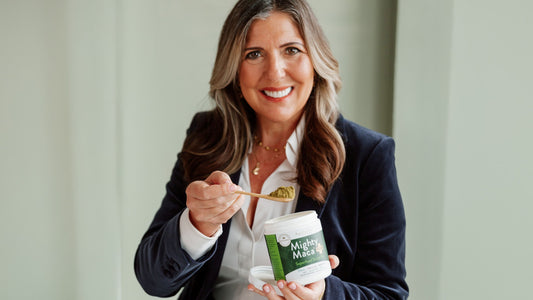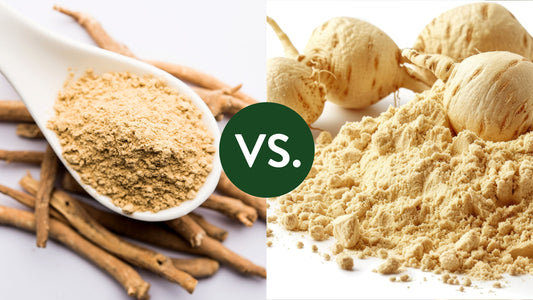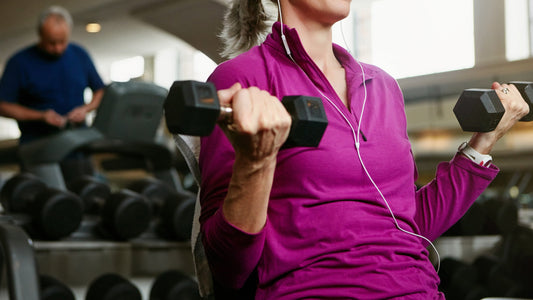Today I have a guest blog post by Dr. Eric L. Zielinski.

Meet Dr. Z
Dr. Zielinski has been on a mission to helping people enjoy the abundant life for nearly 15 years.
Formally trained as a public health researcher, Dr. Z (as he is commonly known) launched his online health ministry with DrEricZ.com in June 2014.
Visited by more than 2.5 million people, it has become the #1 ranked, fastest growing website devoted to Biblical Health on the Internet!
Specializing in the therapeutic use of essential oils, Dr. Z is an accomplished researcher with several publications, conference proceedings and currently sits as peer-reviewer for multiple journals.
What You Should Know About Essential Oils!
Various studies show that essential oils can aid menopausal women.
An article published in the Evidence-Based Complementary and Alternative Medicine journal in 2008 revealed a few things that we already know about essential oils: (1)
- Aromatherapy helps psychological symptoms of menopause such as anxiety, depression, and mood swings. It also helps young and middle-aged women relax.
- A number of aromatic oils have been considered as phytoestrogens because they have components related to the sex hormones.
- Some of these oils have the same structures and functions, such as those of clary sage, fennel, cypress, angelica, and coriander.
- It has been suggested that geranium oil balances hormones and that rose oil improves uterus function.
- Evening primrose is suitable as a base oil in aromatherapy for menopausal women.
Essential oil massage treatments help women undergoing menopause deal with a number of symptoms such as hot flashes, paresthesia, insomnia, nervousness, melancholia, vertigo, weakness, arthralgia or myalgia, headache, and palpitations.
We have yet to know if a particular essential oil is more effective than another. However, the following oils have been found to be effective against menopausal symptoms.
Essential Oils Found To Be Effective In Addressing Menopausal Symptoms
LAVENDER OIL

Lavender is popular for inducing feelings of relaxation and improving the mood of people. It can also improve sleep quality, especially among people with insomnia. (2) Including lavender aromatherapy to your nightly habits promotes better sleep and relaxation.
It is believed that lavender can help calm the body, which helps balance hormone levels naturally. Also, adding one drop of diluted lavender oil to a cold compress can help minimize discomfort in the perineum during menopause.
CLARY SAGE OIL
Rubbing one to two drops of diluted clary sage oil on the back of the neck or on the feet has been shown to help with hot flashes. It can also be quite useful when inhaled. Also, clinical tests show that clary sage is more potent than monoamine neurotransmitter serotonin or 5-hydroxytryptamine (5-HT) and can help menopausal women by minimizing thyroid stimulating hormones and reducing depression and stress levels. (3)
PEPPERMINT OIL
In addition to clary sage, peppermint can also be used to reduce discomfort when experiencing hot flashes. You can do this by misting it on your face using a water spritzer or a portable inhaler. It has also been found that peppermint can help reduce the pain and discomfort brought about by dysmenorrhea, which affects not only young women, but 50% of those who are undergoing menopause. (4)
BASIL OIL
Studies suggest that basil contains a component similar to estrogen. (5) This means it has the potential to aid the body in adapting to changing estrogen levels. Traditionally, basil has been used to combat hot flashes by applying diluted oil on to the feet or on the back of the neck. It can also help lift moods when used in aromatherapy.
NEROLI OIL

A 2014 study that evaluated healthy postmenopausal women who inhaled neroli oil for five minutes, has revealed that this oil can help enhance their estrogen concentrations and blood pressure.
The study participants also reported that it helped reduce their stress levels. (6)
What’s more, neroli has been found to possess anti-inflammatory qualities. This can help provide relief for the many aches and pains that one usually experiences when getting older and undergoing menopause.
GERANIUM OIL
Geranium oil can be quite useful when it comes to providing relief for menopause symptoms such as improving dry skin. A study showed that geranium oil has antidepressant properties that can help women who are experiencing depression and mood swings. A clinical trial involving 120 menopausal women revealed that receiving aromatherapy massage with almond and geranium essential oils can help improve mood and depression. (7)
VITEX AGNUS-CASTUS OIL
You probably haven’t heard of this oil before but Vitex agnus-castus oil is derived from a shrub that grows in Central Asia. The Vitex agnus-castus shrub has blue-violet flowers, long finger-shaped leaves, and dark purple berries. Its fruits and seeds are utilized in medicine production, while the leaves and berries are distilled to create essential oils.
Vitex has been used traditionally to help treat a variety of health issues affecting women including:
- Controlling bleeding
- Female infertility
- Helping the body expel the placenta after childbirth
- Increasing breast milk production
- “Lumpy” fibrocystic breasts
- Menopause
- Menstrual cycle irregularities
- Premenstrual dysphoric disorder (a more serious case of PMS)
- Premenstrual syndrome (PMS)
- Preventing miscarriage in women with low progesterone levels
A study conducted to determine the potency of Vitex agnus-castus oil has found that the oil extracted from the leaf appears to be more potent than the oil extracted from the berry. (8)
How To Use Essential Oils For Menopause Symptoms
If you are considering combining a number of these oils to help you deal with various menopause symptoms, here are some ways to get the most benefits:
- Make your own body moisturizer by combining five to eight drops of your preferred essential oil with carrier oil such as sweet almond oil. Rub against your skin two to three times daily. You can also use a liquid carrier oil to make your own massage or bath oil.
- Place two drops of your preferred oil on tissue paper and hold it under your nose. Inhale its fragrance when experiencing menopausal symptoms.
- Combine two to ten drops of oil with two ounces of purified water. Place the mixture in a spray bottle and then spray it in your home.
- Combine eight drops of oil with half a cup of coconut milk and pour the mixture into a hot bath.
Such an informative blog, thanks Dr. Z!
And one more word from Dr. Anna…
You Can Combine Essential Oils With Your Own DIY Lubricant As Well!
I have a few favorite essential oils that I like to mix in with my DIY lubricant.
My favorites include Salvia sclarea, Roman chamomile or Cape chamomile, rose, lavender, frankincense and sandalwood. I found found these soothe vaginal tissue.
Please note a word of caution, however, when using essential oils in this manner. Never use essential oils straight into the vagina. Always use a carrier oil or my recipe above and test the oil first on your inner arm to make sure it doesn’t irritate you.
Enjoy...and let me know your favorites!!



